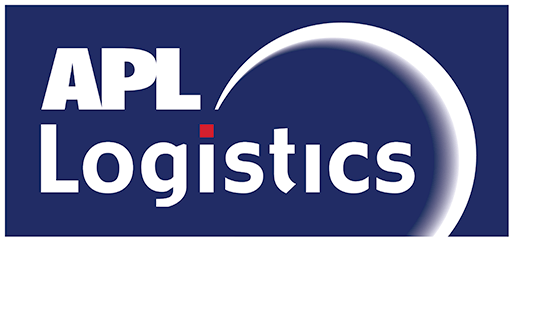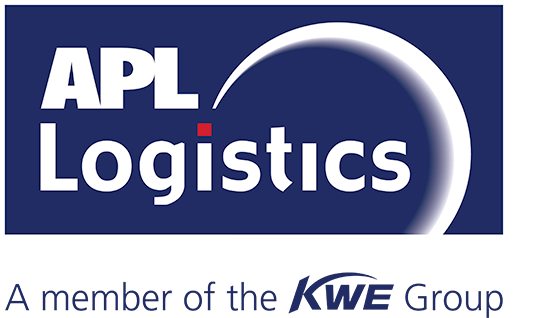October 3, 2021 in Podcast
Keeping Control In A Turbulent Year – Retail
https://www.youtube.com/watch?v=KBo8vCQOV58
The supply chain crisis erodes retailers’ confidence in the recovery as the world struggles to keep shelves stocked in the upcoming peak season. More than ever, business needs to rethink achieving visibility across their stakeholders to make effective decisions.
In this episode of The APLL Pulse Podcast, Betsy and Elger discuss their successes in powering the supply chain from origin to destination. A condensed version of the conversation follows.
April Chapman (Host): Hello, everyone. I’m excited to introduce my guest today. Our first guest, Betsy Ducat, the Senior Director of Global Vertical Management. Betsy’s been in the industry for over two decades. She’s always available for a really good conversation, and she provides some of the best solutions out there. Welcome to the show, Betsy. Our second guest is Elger Postma, the Senior Director of the APAC Retail vertical at APL Logistics. I know that you are a master communicator. I’ve heard this from many and I know this personally, so we’re happy to have you here.
Betsy Ducat: Thank you, April.
Elger Postma: Thank you. Great to be here today.
April Chapman: So, let’s dive into our topic today, keeping control in a turbulent retail market. So, Betsy, we know the global supply chain has not recovered. E-commerce has taken off. Can you describe some of the specific challenges from the conversations you’ve been having with our clients these days?
Betsy Ducat: Yeah. I would say everyone is dealing with incredibly low inventory levels. I’m with a customer yesterday who is just saying they’re desperate for their freight because the sales are through the roof. Similarly, the brands that we deal with are facing the same situation. In this environment, we always knew that this would last at least through the New Year, then through the ILWU West Coast Labour negotiations. Those contracts are up in July. So, we thought that we would see an environment where customers are trying to advance merchandise and get ahead of the anticipated disruptions. In general, the customer and carrier community’s feedback are that we will continue to see this into 2023.
Customers are looking to see what they can do from a visibility standpoint, to understand where their merchandise is within the supply chain, and how having that visibility will impact their ability to get their merchandise into the hands of the end customers.
April Chapman: So, Betsy, we know that we’re still in the middle of all these changes, and I’m sure you’re wondering how the customers are coping with the real-time challenges. What else is happening?
Staying Ahead
Our focus and mission are to stay connected with the customers. I have at least two one-on-one calls with different members of our customer community each week to listen to what’s important to them, and we translate that into how we can focus our service offerings or co-create something that will help them out.
Betsy Ducat: I also have an 80-20 rule to focus on flowing 80% of the merchandise through 20% disruptions. I would say everyone is dealing with a 60-40 type of environment today.
The other challenges include capacity issues and general equipment issues. The ocean carriers are focusing on operational flows, not as much on timely updates of systems. You have all this connectivity established, whether EDI or API, so we get those critical updates to communicate to our customers. Every milestone is vital to provide that visibility. So, our customers know what they can deliver to their customer.
Inventory levels are still incredibly low. Fortunately, the customers we’re working with, they’re very successful. We’ve been able to help keep their supply chain moving. I talked to the customer this morning who was giving kudos to our teams in Bangladesh, Cambodia, and Vietnam. Just with how it’s amazing what our teams can do when it comes to keeping the merchandise flowing.
April Chapman: Elger, what about you? What are your thoughts?
Elger Postma: Everybody in the logistics community has seen that the capacity has become tight due to Covid. There are enough containers in the world to ship everything, except they’re in the wrong location. So it means that there is an extreme tightening of capacity. At the same time, demand has been robust for the past year and a half, and that makes the supply chain challenges, especially the ocean freight containers are running at their maximum capacity.
So, what we see is that if there is a minor disruption in a random location somewhere in the world, it affects everything. For instance, there are outbreaks of the Delta variant in many countries in Southeast Asia, and the governments are trying to contain them. Every government has a different approach. They tried to go for localized restrictions, movement, and measures. Within the same city in Vietnam, different districts may apply different measures. So, we need to be very quick and get the information to act on it on the ground. And I think that’s really where we as a company stood out.
We have the technology and the people on the ground who are in constant contact with the governments, authorities, customers, and providers, to ensure everyone has the latest information.
April Chapman: Now we’re seeing empty shelves and things like that, I have such an appreciation for the fact of all the work it takes to get to that. The capacity has changed, and the freight is full, and we’re trying to get everything where it needs to go. But it’s sometimes different things, such as PPE and these other things, that don’t make it to our shelves for the average consumers over there.
That’s a critical point, the ability to get the right product out.
With the limitations in the ocean freight capacity, you must be very specific in the products you get out in that container you have available. That’s where we make a difference in supporting our customers at the place where it happens, the origin.
Elger Postma: Visibility to raw materials has become even more critical. Within the overall supply chain flow and management, most of our customers don’t control that element of their supply chain.
In addition, certain brands are struggling to shift from ocean freight to sending cargo by air. Then, again, the companies need to make sure they’re very comfortable from a sustainability point of view. Right now, with the cost of ocean containers, the air cargo is looking more appealing. You have ocean rates edging into the mid-five digits, which is incredible compared to what was experienced a year ago.
You never thought you would think of $25,000 to move a container from Vietnam or Shanghai to the West Coast. But certain people are doing that because it is less expensive than air, and they need to move the merchandise, which, ultimately, will translate to what the end consumers are paying.
The Need for Visibility
April Chapman: Right. We’re kind of changing the mindsets and changing the options that are more viable for them. So Elger, what are the things that you’re doing differently to help your clients rise above these kinds of challenges?
Elger Postma: The only thing the customers want is visibility. We have very intense communication with our teams and customers.
Every single day, we’re talking to the people at the origins, such as India, Bangladesh, Cambodia, Vietnam. We’re also talking to our customers in Europe, the US, and Australia through video conferencing.
Elger Postma: That is making an amazing difference and has enabled quicker communication. Everybody is fully aware of what’s happening.
April Chapman: I believe in changing for good, and that is one of those changes that I think will stick. Being personable is great. It’s nicer to be able to see one another.
Elger Postma: Betsy and me, our families, her kids and my kids are best friends through teams.
April Chapman: Family calls, that’s so sweet! Back to you, Betsy. What would you say are the most important things for any business to think about to help them drive their business forward in this accelerated retail market?
The Need For Advanced Planning
The customers that I’ve spoken to are really focused on advanced planning and solidifying their commitments.
Betsy Ducat: More customers have long-term commitments out there. And, yeah, they’re paying a bit of a premium. But I would say in the long run, it’s serving them incredibly well. It’s all about choosing the right partners, the customer community we’re dealing with, where the approach was dealing with direct carriers who had control over the network. Customers are now also dealing with anywhere from between five and ten MBOs within their contracted carrier mix. So, there’s planning. It’s making sure that you have the right partners, the right visibility solution, communication mechanism, and means of staying connected and having visibility over your supply chain.
April Chapman: Well, it’s been an insightful conversation. Thank you so much for joining me today.
Betsy Ducat: Thank you, April. Yeah. Great to be with you. Elger.
Elger Postma: Thank you, April. Pleasure, Betsy.


